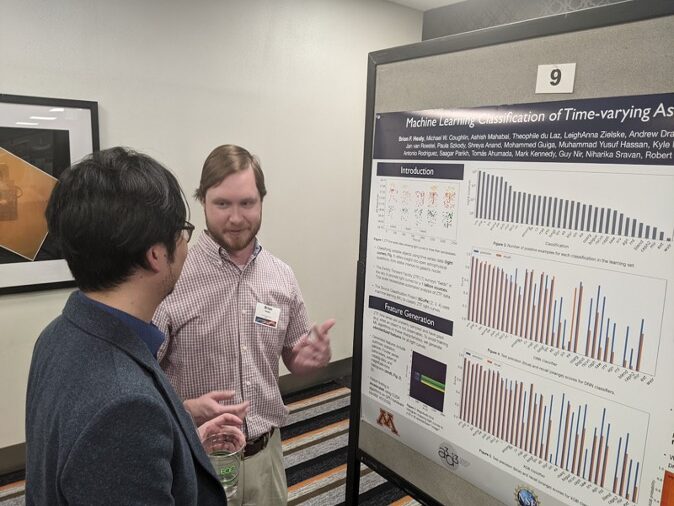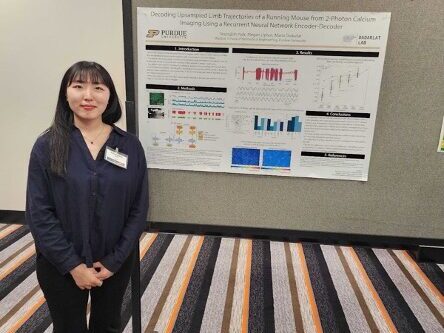2023 NSF Harnessing the Data Revolution (HDR) Ecosystem Conference
By: Xiangyang Ju (Computing System Engineer, LBNL)
November 13, 2023
In the vibrant Mile High City, members and affiliates of the A3D3 institute converged with a gathering of over 100 scientists, engineers, and educators. Their mission: to fortify the Harnessing the Data Revolution (HDR) ecosystem. This annual HDR-wide conference, now in its second year, aims not only to strengthen the HDR ecosystem but also to extend its reach to other related NSF-supported initiatives, fostering collaboration in our collective endeavors.
The HDR initiative, funded by the National Science Foundation (NSF), is a nationwide effort that commenced in 2016. It seeks to enable new avenues of data-driven discovery, addressing fundamental questions at the forefront of science and engineering. Within the HDR ecosystem, the A3D3 institute spearheads a paradigm shift by deploying real-time artificial intelligence on a grand scale to advance scientific knowledge and expedite the process of discovery.
The conference had four primary objectives for its participants:
- Foster community-building, forging stronger ties among HDR entities and the broader data-intensive research communities.
- Facilitate cross-learning by building on successes, best practices, and innovative products.
- Provide a platform for reflection on the achievements and future goals of each HDR entity.
- Identify overarching challenges in data-intensive research, not only among HDR entities but also beyond. The conference aimed to foster new collaborations and explore future opportunities.
To meet these goals, the conference featured a diverse range of activities, including keynote presentations, discussion panels, and “unconference” sessions. Notable activities included a pitch session and subsequent asset mapping for the winning pitches, in which the A3D3 Institute made substantial contributions.
In summary, A3D3 played a pivotal role in the conference, leading the reflection session titled “Humans in the Equation: Stories of Collaboration.” The session featured a success story narrated by Javier Duarte from UC San Diego, highlighting the Postbaccalaureate program organized by the A3D institute. This program aims to enhance access to scientific careers for post-baccalaureates interested in gaining insights into scientific research and exploring various scientific domains. Professor Duarte’s presentation was followed by cross-community discussions on “Equitable, Diverse, and Inclusive Training, Education, and Outreach Opportunities in the HDR Ecosystem,” co-led by Professor Mark Neubauer.
During the same session, A3D3 members engaged in developmental reflections, examining the context of the ecocycle planning phases and potential obstacles. The primary purpose of this activity was to identify impediments and opportunities for progress.
The six posters given by A3D3 members covered a wide range of scientific frontiers.
- Brian Healy: the “Machine Learning Classification of Time-varying Astrophysical Sources”
- Seungbin Park: “Decoding multi-limb running trajectories from two-photon calcium imaging using deep learning.”
- Ben Carlson: “Module for evaluation of machine learning algorithms in FPGA hardware for high energy physics.”
- Mark Neubauer: “A3D3 community engagement, education and outreach”
- Javier Duarte: “hls4ml: Open-source codesign of machine learning algorithms on FPGA for scientific discovery.”
- Phil Harris: “Real-time Gravitational Wave Alerts using AI.”



Figures: left: Brian Healy. Middle: Seungbin Park, Right: Ben Carlson
A3D3 took the lead in the topical session addressing equity, diversity, and inclusion (EDI) within the realm of training, education, and outreach. The session served as a platform for discussing the promotion of EDI in workforce development within the HDR ecosystem. Key topics of discussion included ensuring fair trainee selection processes, establishing, maintaining, and enhancing specialized training programs, creating specific forums, and extending program impact through education and outreach. During the session, A3D3 members shared their best practices with other institutes within the HDR ecosystem, covering areas such as equitable trainee recruitment, outreach event organization, and the establishment of post-baccalaureate programs.
A separate session led by A3D3 delved into the realm of machine learning challenges. Professor Philip Harris, representing MIT, delivered a comprehensive presentation titled “Machine Learning Challenges, FAIR, and Reproducible Machine Learning Workflows.” In this talk, Philip introduced the latest technical developments in the Codabench platform, designed to host diverse challenges and facilitate automated metric calculations. Many other HDR institutes expressed keen interest in using this platform for publishing machine learning challenges. The discussions extended into an ideation exploration session, during which Philip Harris advocated for the inception of an Anomaly Detection challenge spanning all HDR institutes—a pan-HDR “Grand Challenge.”

As the annual HDR conference concluded, it left attendees inspired by new ideas and fresh possibilities. Looking ahead, A3D3 will take the helm next year, hosting the conference at UIUC in Urbana-Champaign.
